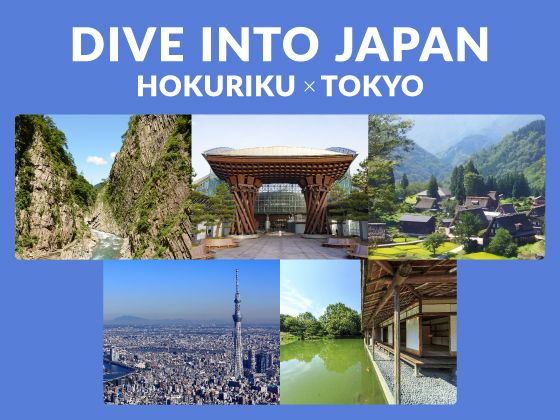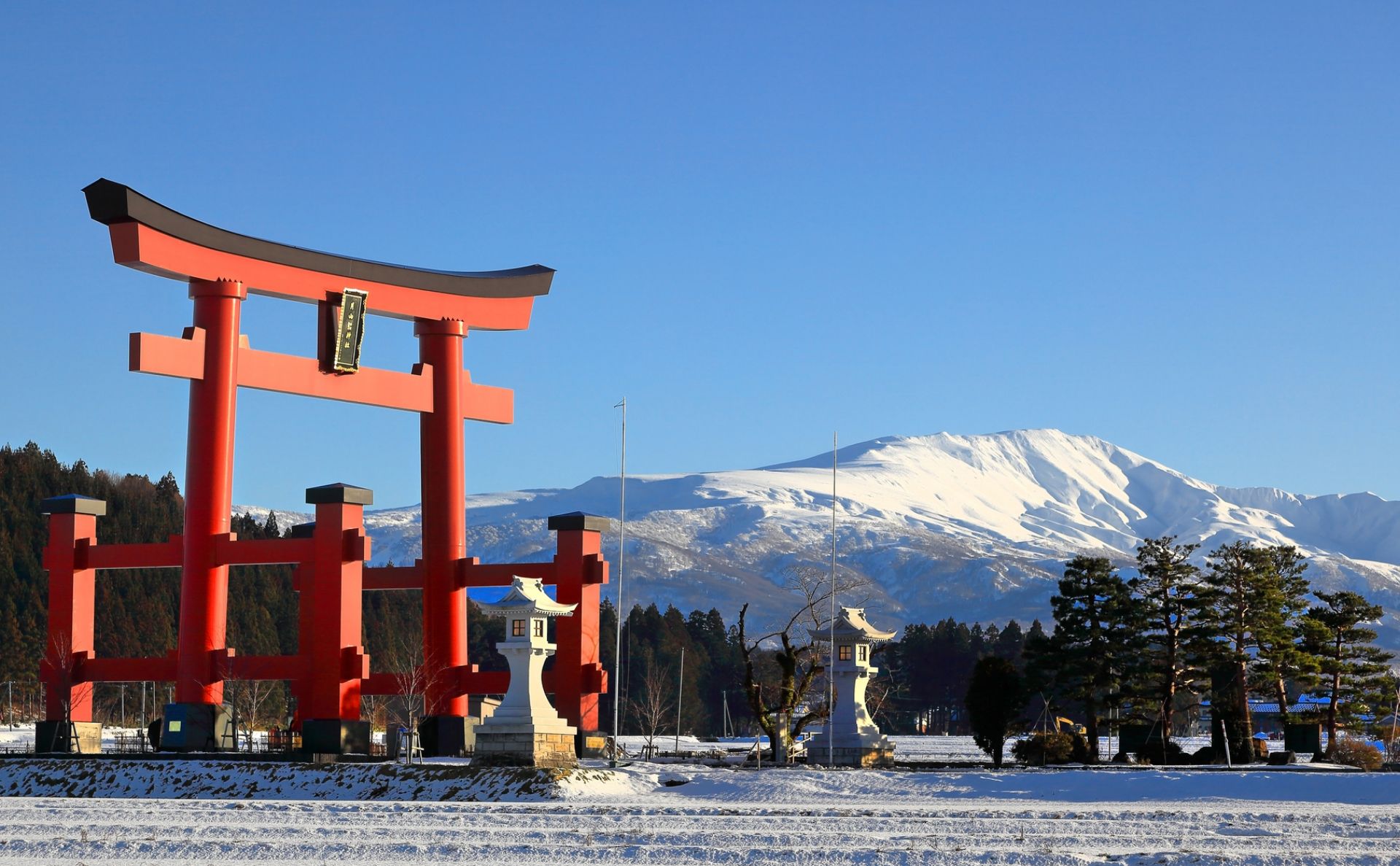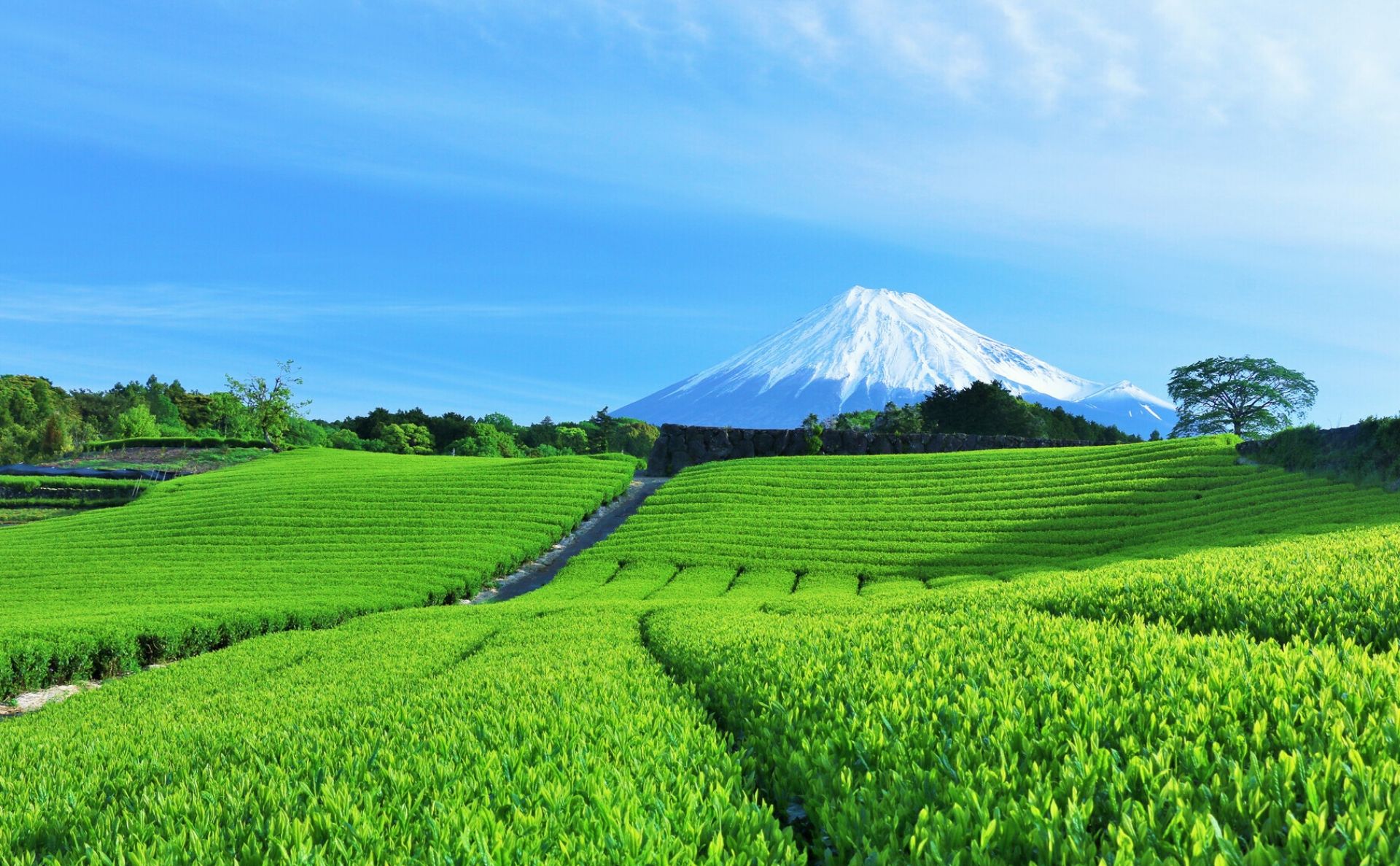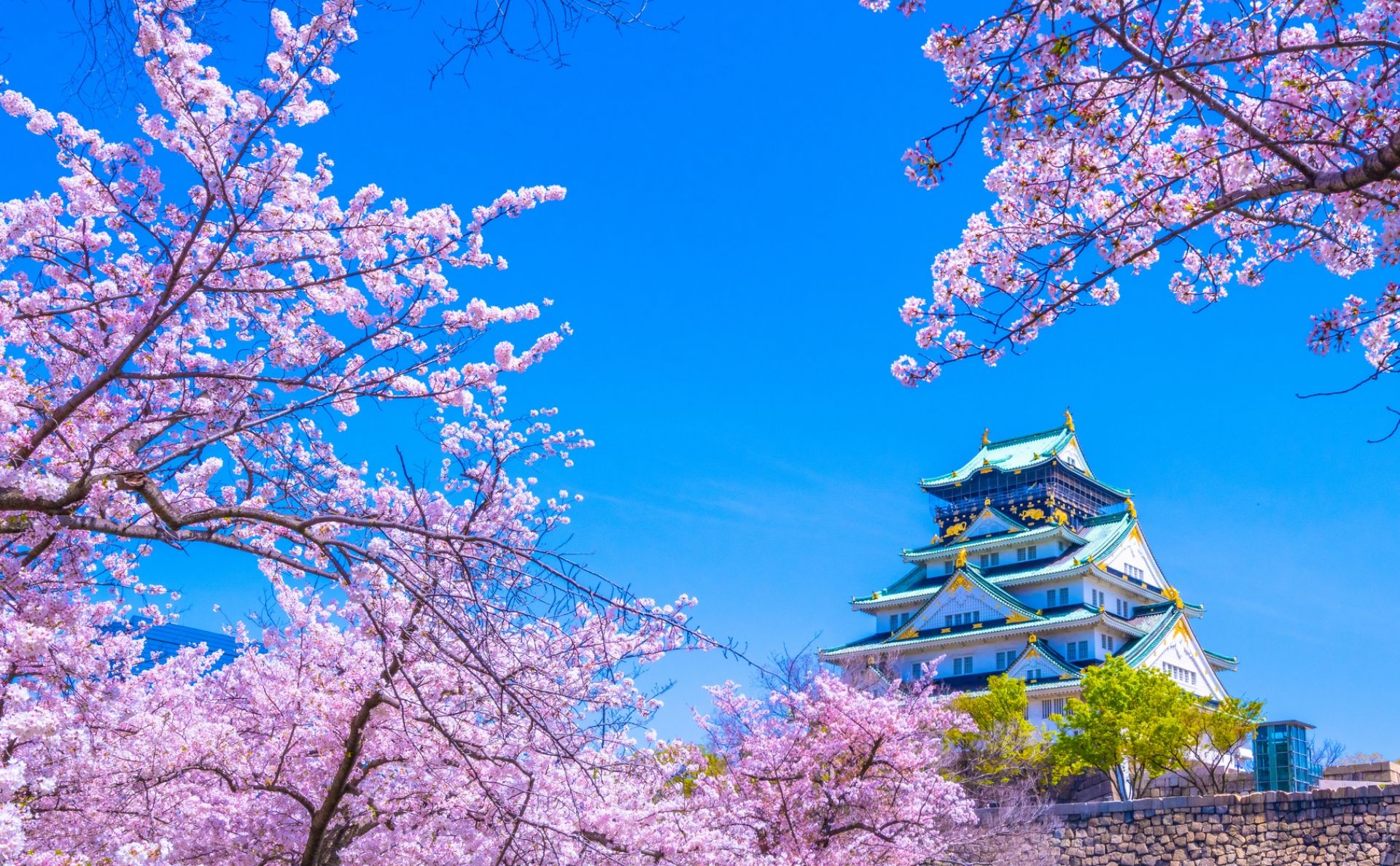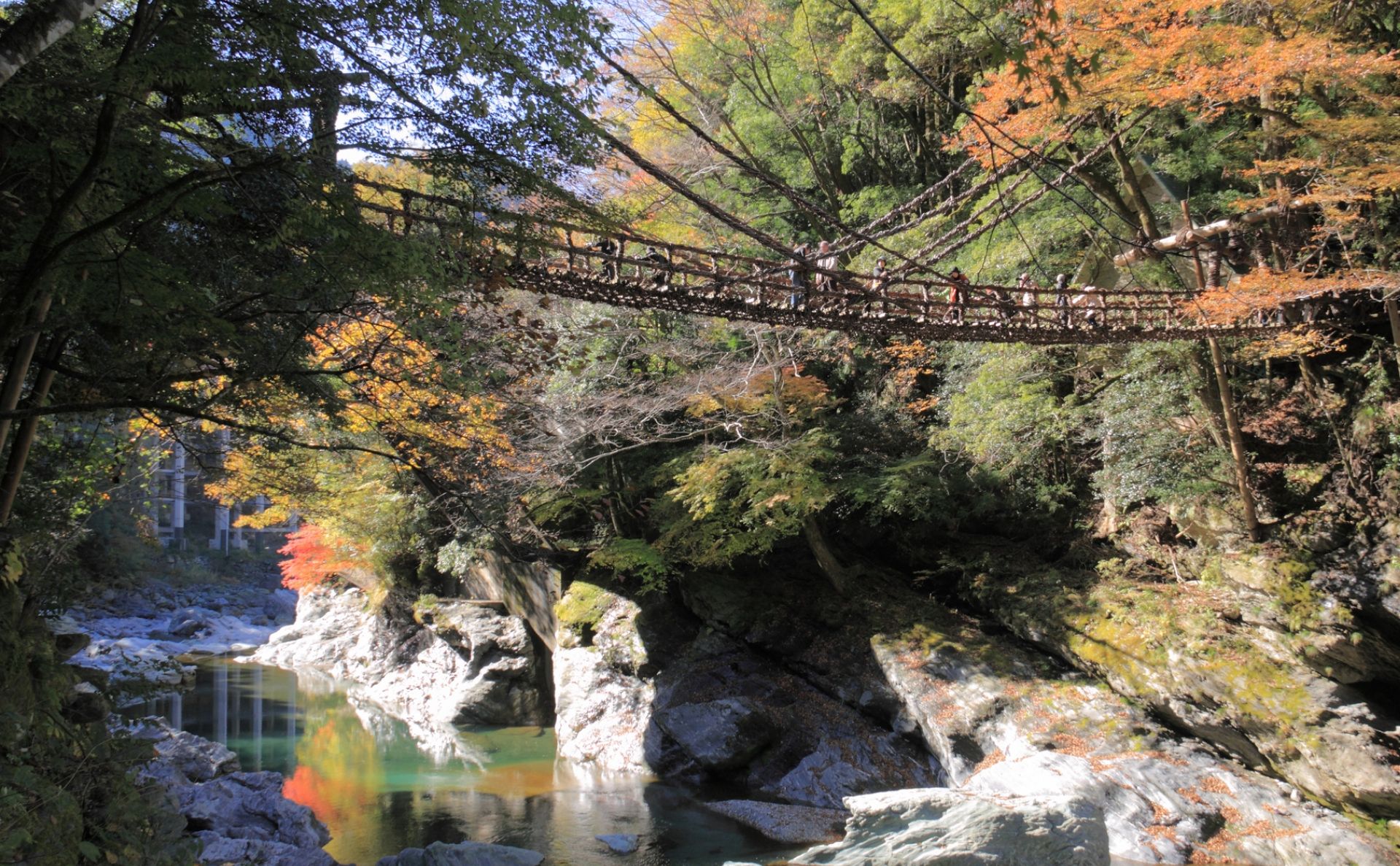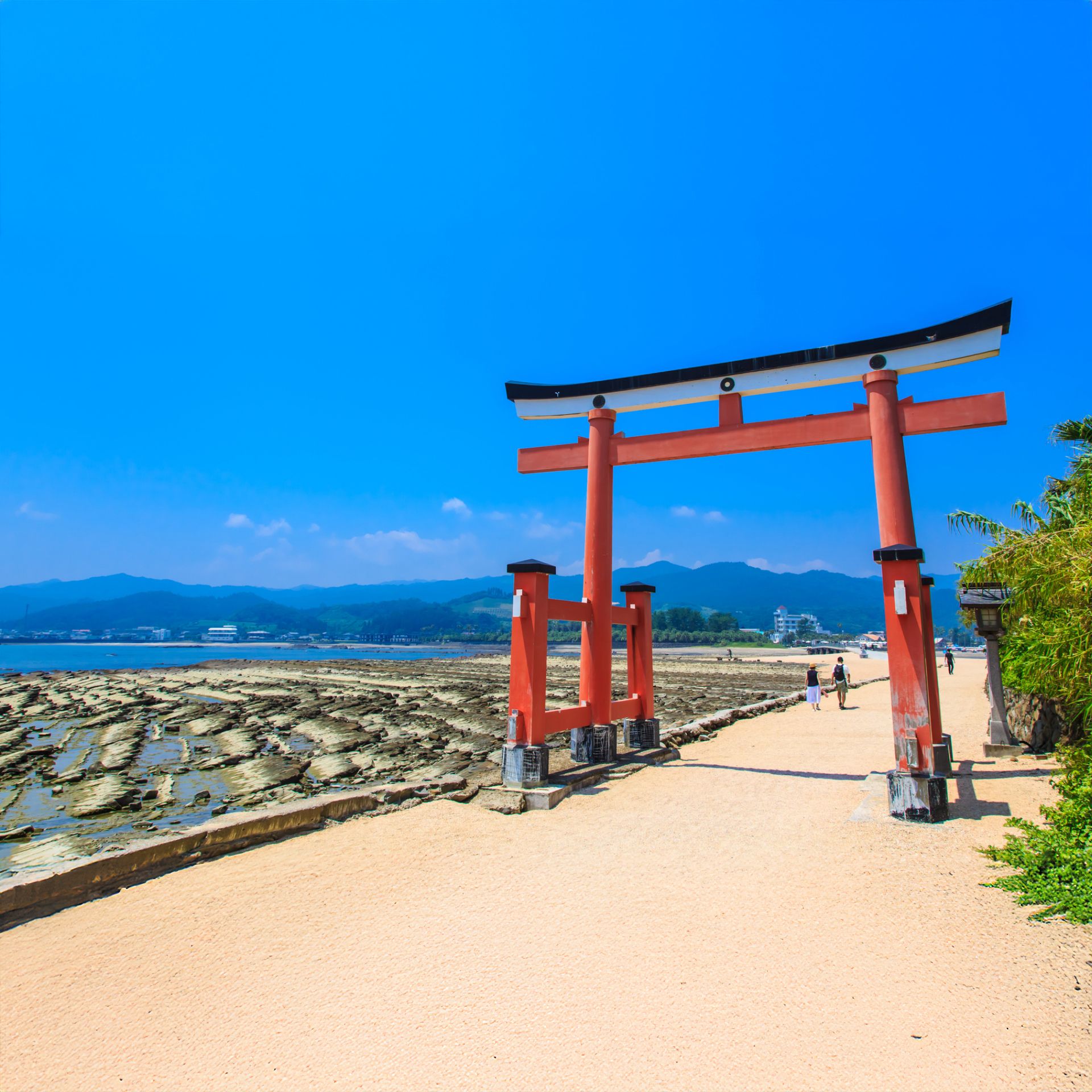Hokuriku
A Journey Through Majestic Seas
and Mountains
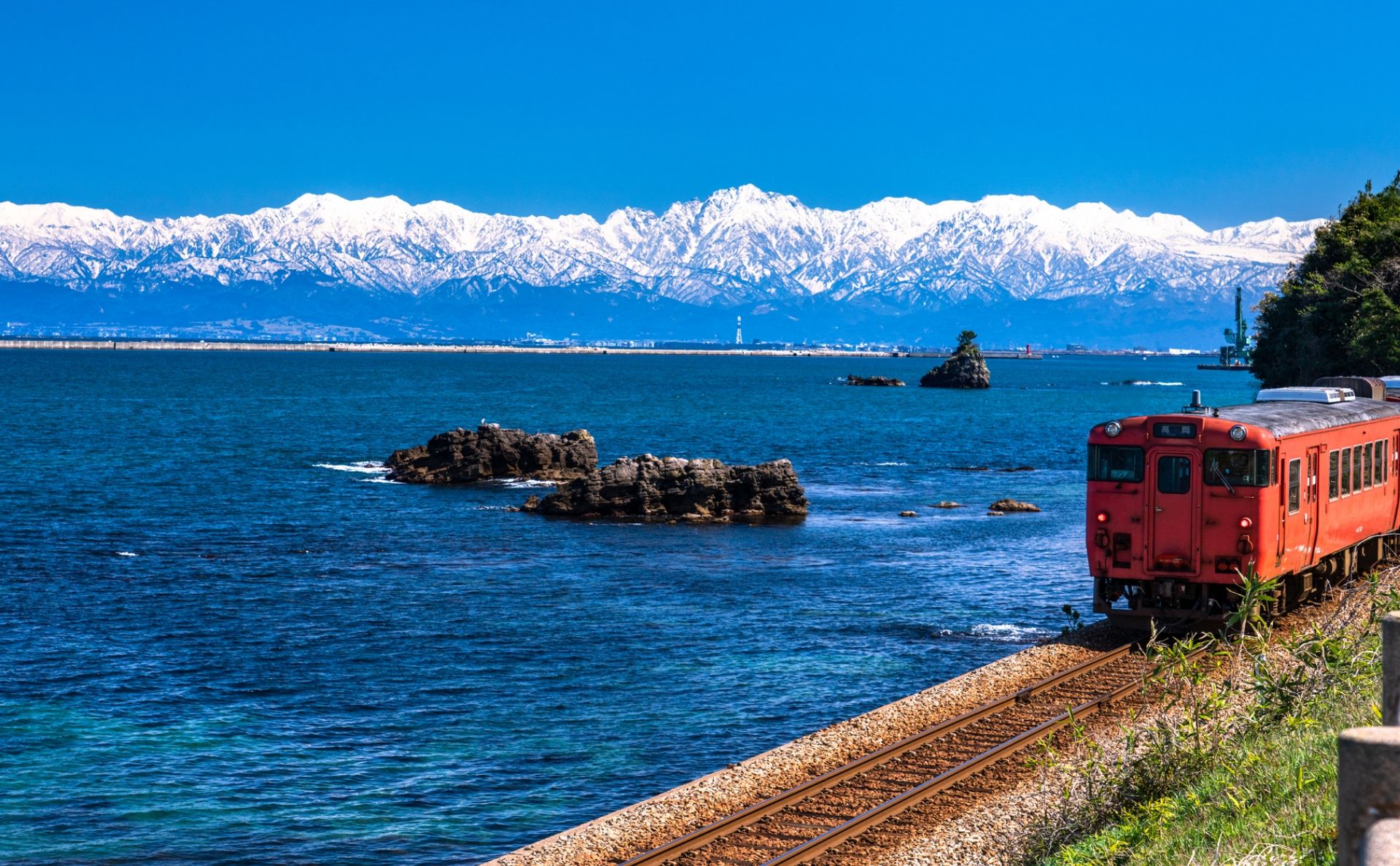
The Hokuriku region stretches along the Sea of Japan coastline of the country, with breathtaking unspoiled views of natural beauty where the snow-capped mountains sometimes seem to touch the sea. Some of Japan's most stunning natural scenery can be found here across its five unique prefectures.
Tokyo
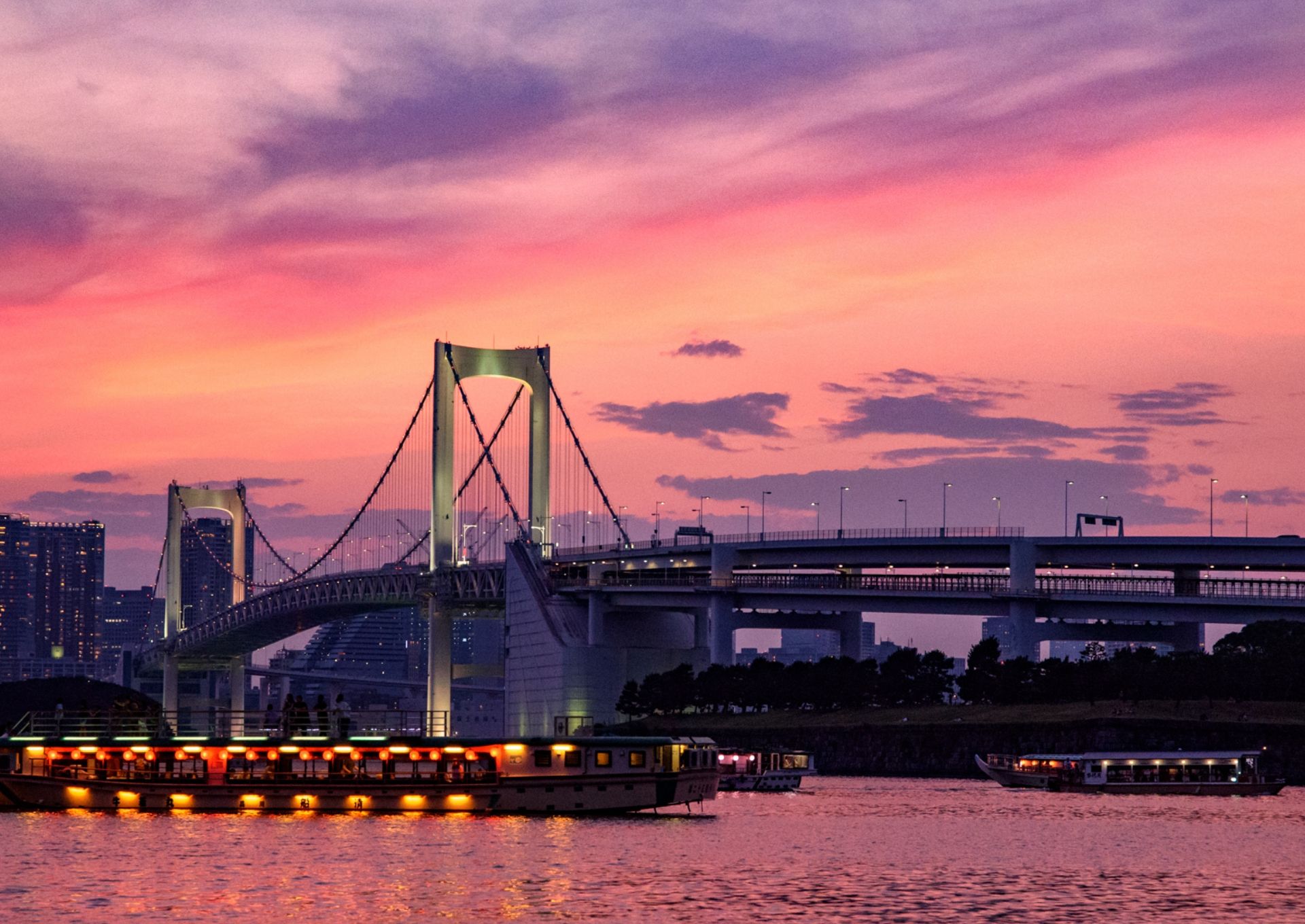
Rainbow Bridge, Tokyo
Photograph courtesy of Todd Fong
In sharp contrast to the rugged Hokuriku coastline, Tokyo Bay is a peaceful inlet protected from the heavy Pacific surf by two large peninsulas. The dangers from Tokyo Bay came not from nature, but from man.
Odaiba is an artificial island originally built in the 1850s to defend the capital from foreign aggressors attacking by sea, but it has shed its military history to become a destination for Tokyoites to escape the urban chaos of the city. The Odaiba Seaside Park has been transformed from a fort into a park where visitors can enjoy panoramic views of the Tokyo Bay skyline, including the Rainbow Bridge and Tokyo Tower. A replica of the Statue of Liberty given as a gift from France also graces the park. The view evolves as day turns to night, with sometimes vivid sunsets as the lights of the city twinkle to life. With the Seaside Park and a variety of shopping and entertainment attractions on Odaiba, you can spend an entire day enjoying the island, with a night time view of the Tokyo skyline as the perfect conclusion.
From Tokyo Station, take the Joetsu Shinkansen to a stunningly beautiful sight in the mountains of Niigata.

The Hokuriku region is located along the Sea of Japan coast of Honshu, stretching for kilometers from northwest to northeast of Tokyo. It is conveniently accessed by the Hokuriku and Joetsu Shinkansen bullet train lines from Tokyo Station.
Niigata
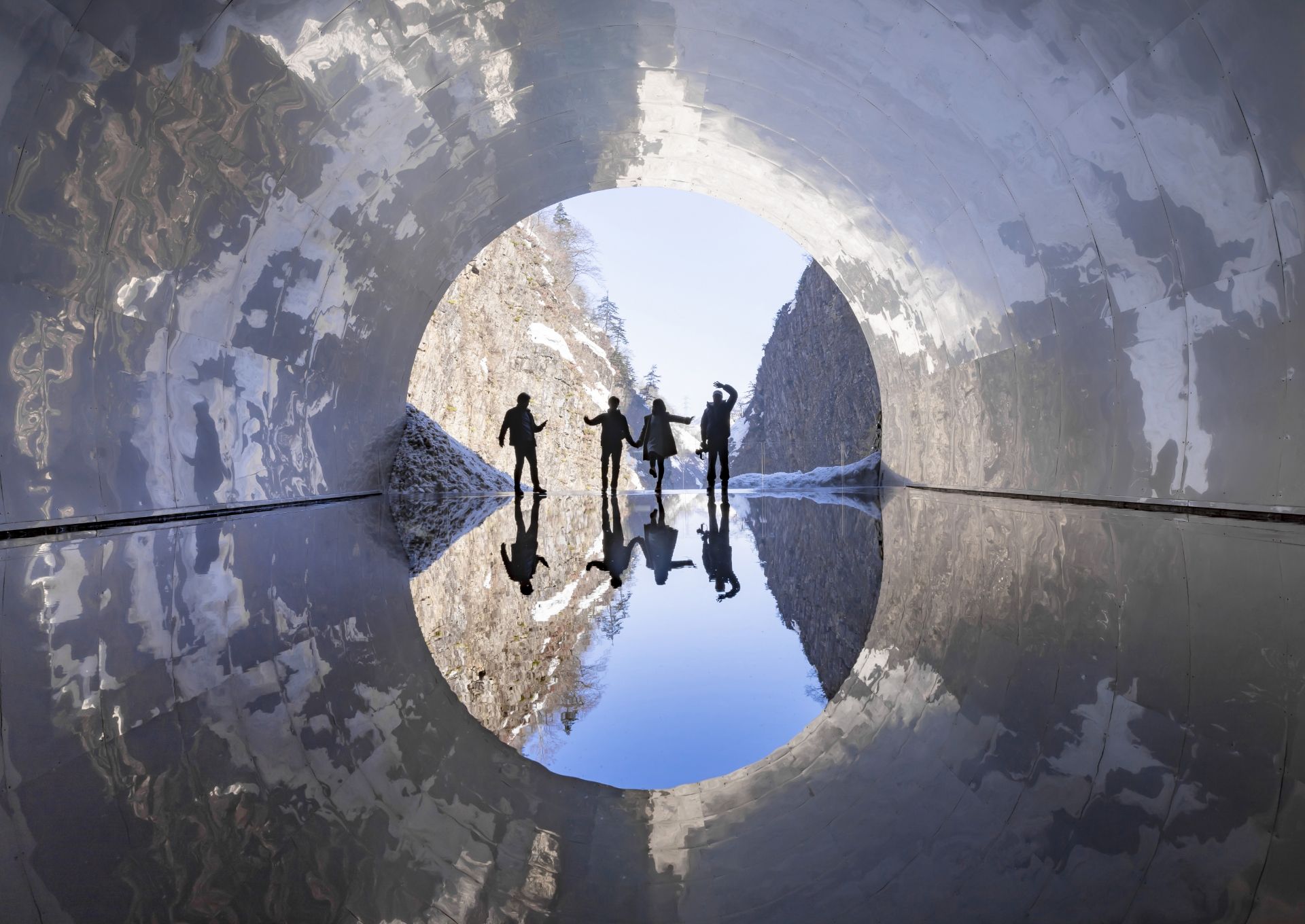
Tunnel of Light, Niigata
Ma Yansong / MAD Architects, “Tunnel of Light” (Echigo-Tsumari Art Field)
Kiyotsu Gorge is regarded as one of Japan's three magnificent gorges, formed from natural phenomena that began 16 million years ago to create a unique landscape of columnar rock joints jutting out of the gorge like an alien form of construction, making the scene seem like it is from another world. Unfortunately, instability in the rock formations created a safety hazard that closed the hiking trails within the Kiyotsu Gorge indefinitely.
The stunning landscape could simply not be ignored, however, so in 1996, local authorities constructed a 750-meter-long tunnel to four viewing spots along the gorge. In 2018, the tunnel was renovated for the Echigo-Tsumari Art Triennale by MAD Architects, who created the "Tunnel of Light" as one of its exhibits. It features a shallow pool of spring water that creates a perfect reflection of the scenery in its still water and has become one of Hokuriku's best known natural attractions. The Tunnel of Light is only one of several artistic renovations made to the tunnel, however; several more exhibits feature art inspired by other elements of nature.
Take the Shinkansen to Toyama and board a bus tour to Tateyama, where the Northern Japan Alps reach heights of nearly 3,000 meters.
Toyama
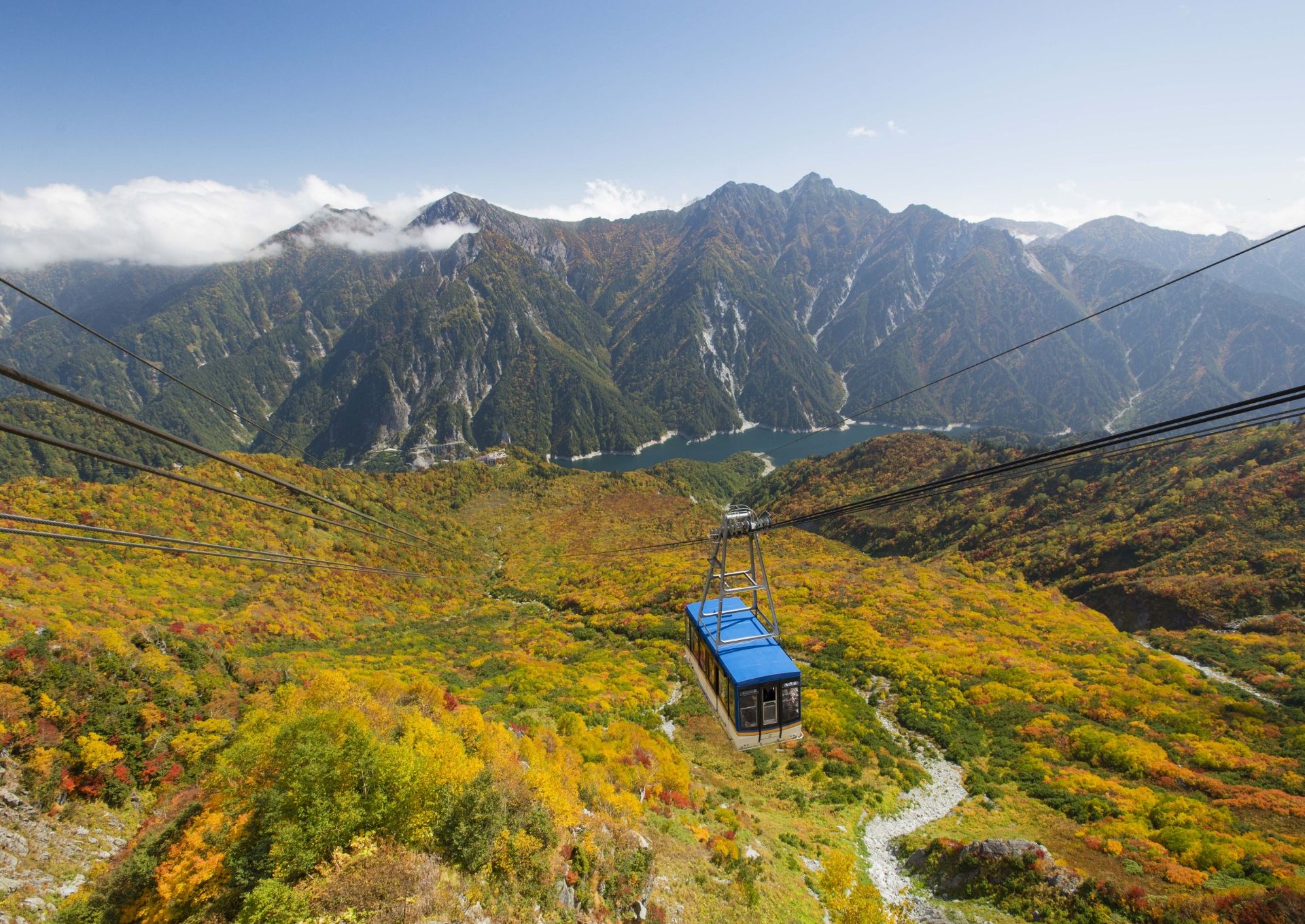
Tateyama Ropeway, Toyama
Photograph courtesy of Tateyama Kurobe Alpine Route
The Tateyama Kurobe Alpine route traverses over 37 kilometers of Japan's most difficult-to-access areas, the Northern Japan Alps. With jagged peaks jutting into impossibly blue sky, the scenery here will draw favorable comparisons with the Alps stretching across Europe on a more compact, easy-to-access scale.
The route connects Tateyama Town in Toyama Prefecture with Omachi City in neighboring Nagano using a network of buses and cable cars. Long tunnels have been bored through areas otherwise impassible by vehicles. A highlight of the Alpine Route is the Tateyama Ropeway, a 1.6 kilometer long aerial tram line which is not supported by any pylons along its length, giving riders an uninterrupted view of the breathtaking mountain landscapes.
The area is open to visit from mid-April through November, a period in which all four seasons are represented. Many visitors come to witness the towering 20-meter-high snow walls of the snow corridor in early Spring, but other parts of the year offer spectacular sights: colorful alpine wildflowers in summer and the blazing colors of the fall foliage covering the mountainsides.
From Toyama, travel by Shinkansen and rental car to Ishikawa Prefecture, home to an accessible stretch of beach.
Ishikawa
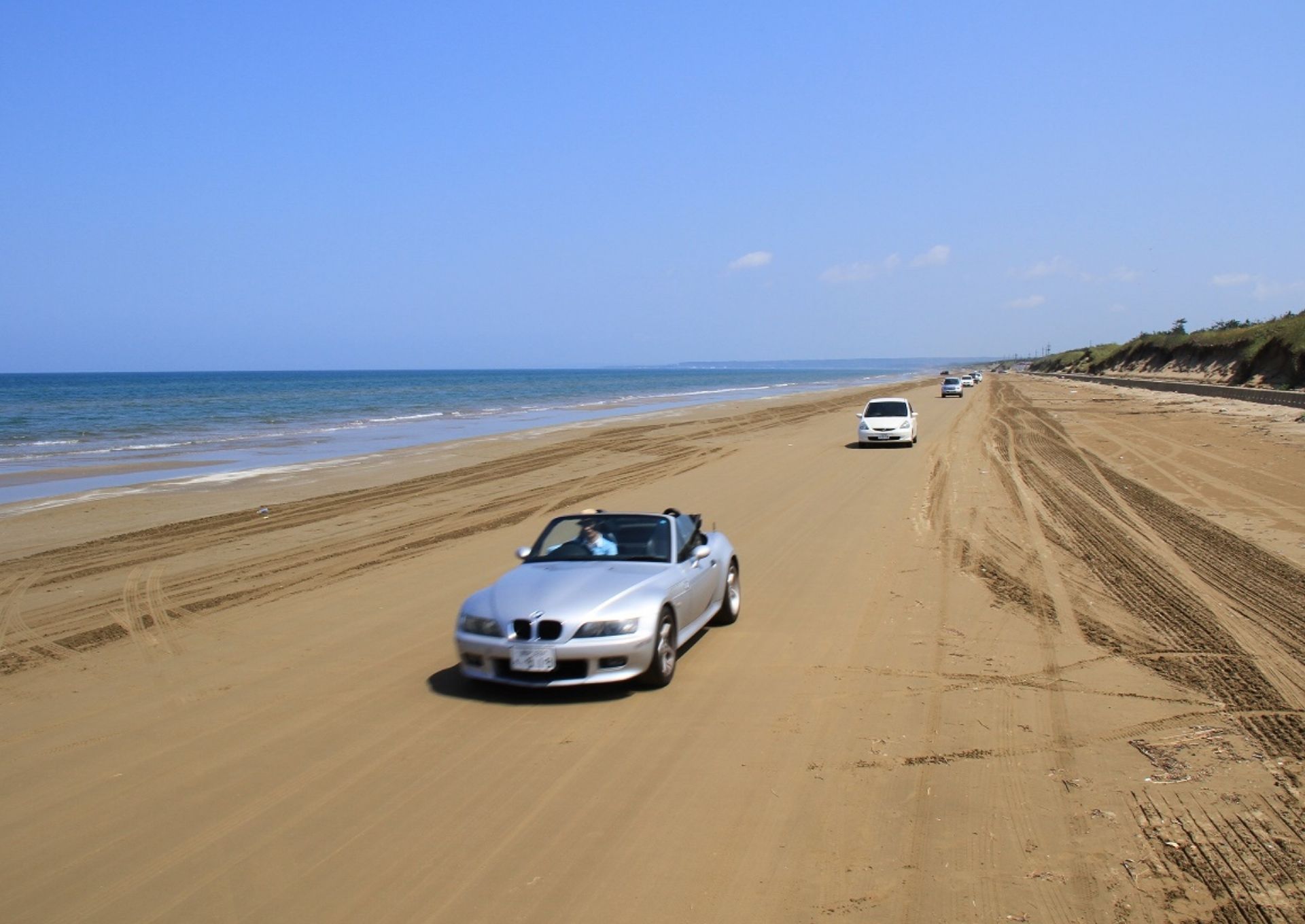
Chirihama Nagisa Driveway, Ishikawa
Photograph courtesy of Ishikawa Tourist Association
Don't try this at home, but Chirihama Nagisa is a stretch of beach where vehicles can drive for approximately eight kilometers along the water's edge without fear of getting stuck in the sand. The tiny size and unique shape of the sand particles here make it possible, and the beach can become packed so tightly that you can even ride two-wheeled vehicles like bicycles and motorcycles on it. Riding or driving along a beach with the waves lapping at the sand so close by is a truly unique experience and this is the only place in Japan where it is possible.
The beach is a popular destination not just for driving, but also for summer swimming and fresh seafood meals except bad weather days when it is closed. You can pull over and park on the beach to enjoy the sunset view over the tranquil ocean and collect a few seashells by the shore. The Hokuriku coastline is famous for fresh and delicious seafood, so a stop at a roadside stand for some grilled clams or other delights is a must.
The Hokuriku Shinkansen from Kanazawa takes you further along the Sea of Japan coast to your next destination in Fukui Prefecture.
Fukui
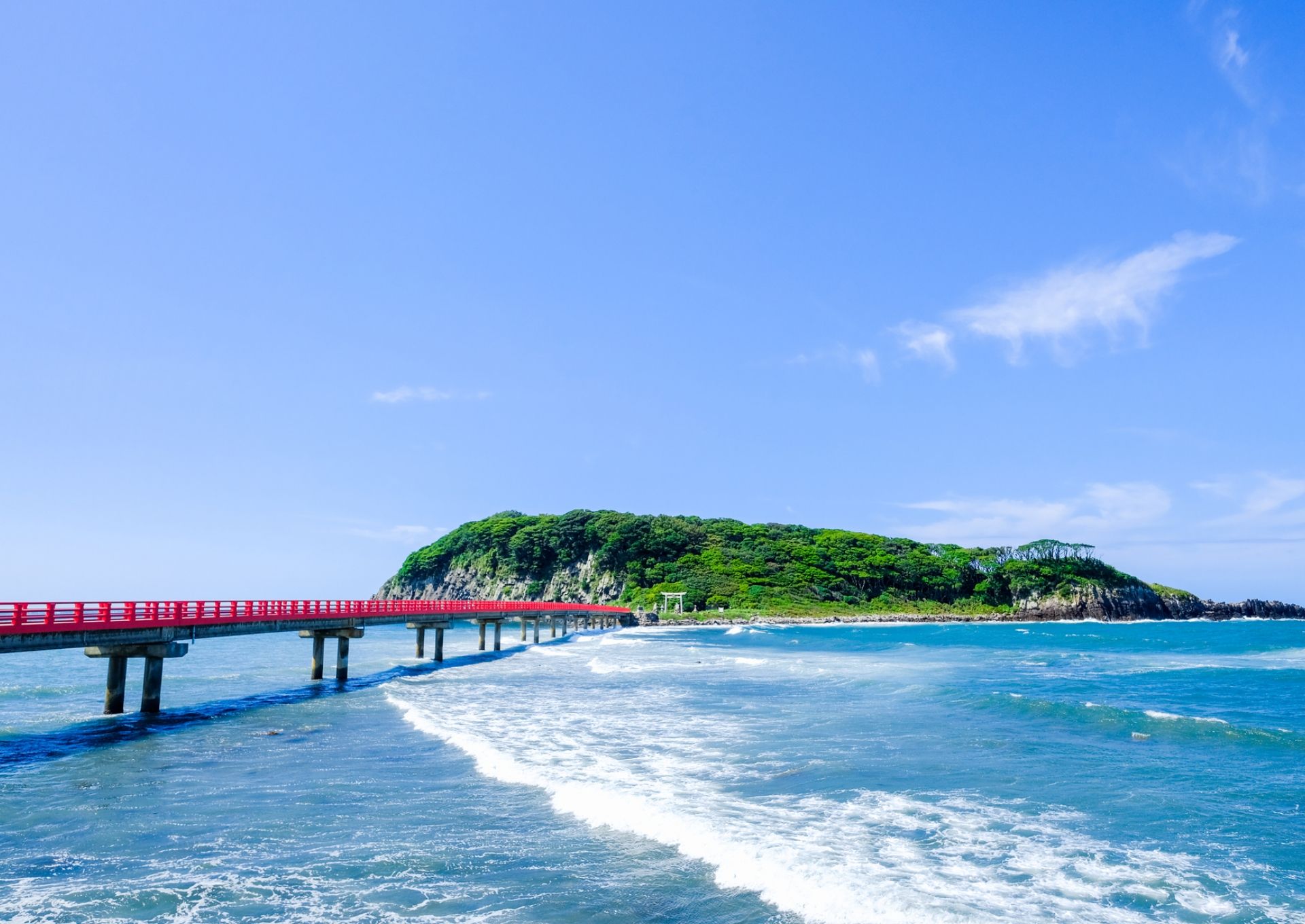
Oshima, Fukui
One of the most picturesque locations along the Fukui coastline, Tojinbo's sharp rock columns emerging from the sea are a sight to behold. Paved access to the cliffs from a parking area is lined with food and souvenir stalls but once you reach the rugged cliffs, nothing stands between you and a precipitous 30-meter drop into the rough seas. Tojinbo has long been regarded as a place where the beauty of nature is to be both admired and respected, preserved as a National Natural Monument since 1935. When sea conditions allows, you can also view the cliffs close up by sightseeing boats. 55-meter-high Tojinbo Tower offers panoramic views of the coast and the majestic beauty of the area.
Just off the coast, tiny Oshima Island is accessible by a brightly painted footbridge. The island can be explored in about an hour along a circular walking path. Hidden among the trees, you'll find the main Ominato Shrine, where people pray for safe voyages and abundant catches on the sea. A spectacular view of Tojinbo from the sea is one great reason to make a visit to the shrine.
From picture-perfect views of some of Japan's most scenic coastlines to the fresh mountain air and clear streams of its highest peaks, Hokuriku offers an alternative to Japan's typical tourist destinations. It also boasts some of the country’s best seafood, rice, and sake, thanks to its location along the Sea of Japan and its abundant water resources, including snowmelt. And with its close proximity to Tokyo, Hokuriku is an easy addition to your travel plans.
Public Transport Operators
-
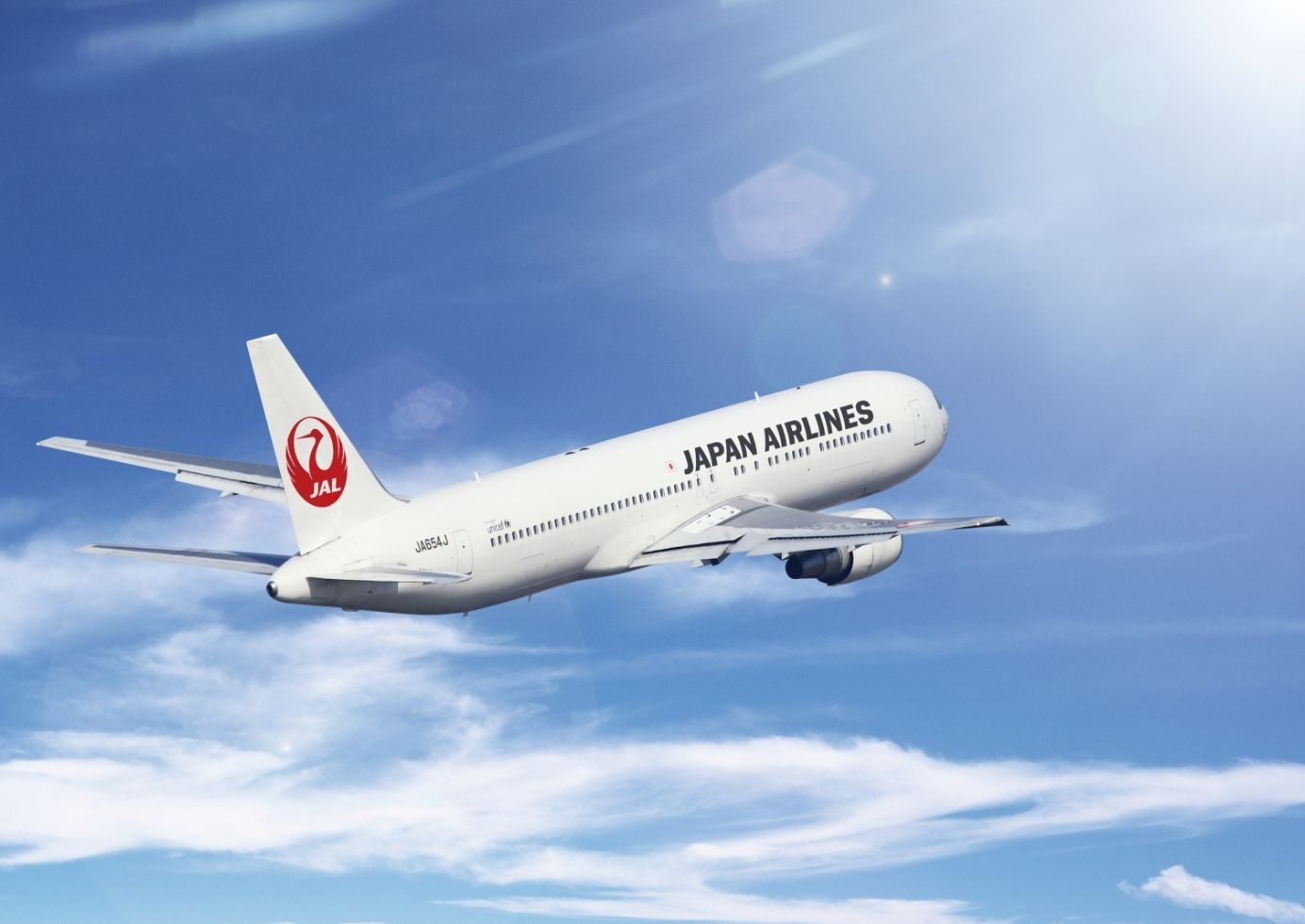
JAL
Japan Airlines operate bound for HOKURIKU region at 1 Airport(Komatsu) and 6RT/Daily, Also We provide Domestic Discount flight. We look forward to your patronage.
-
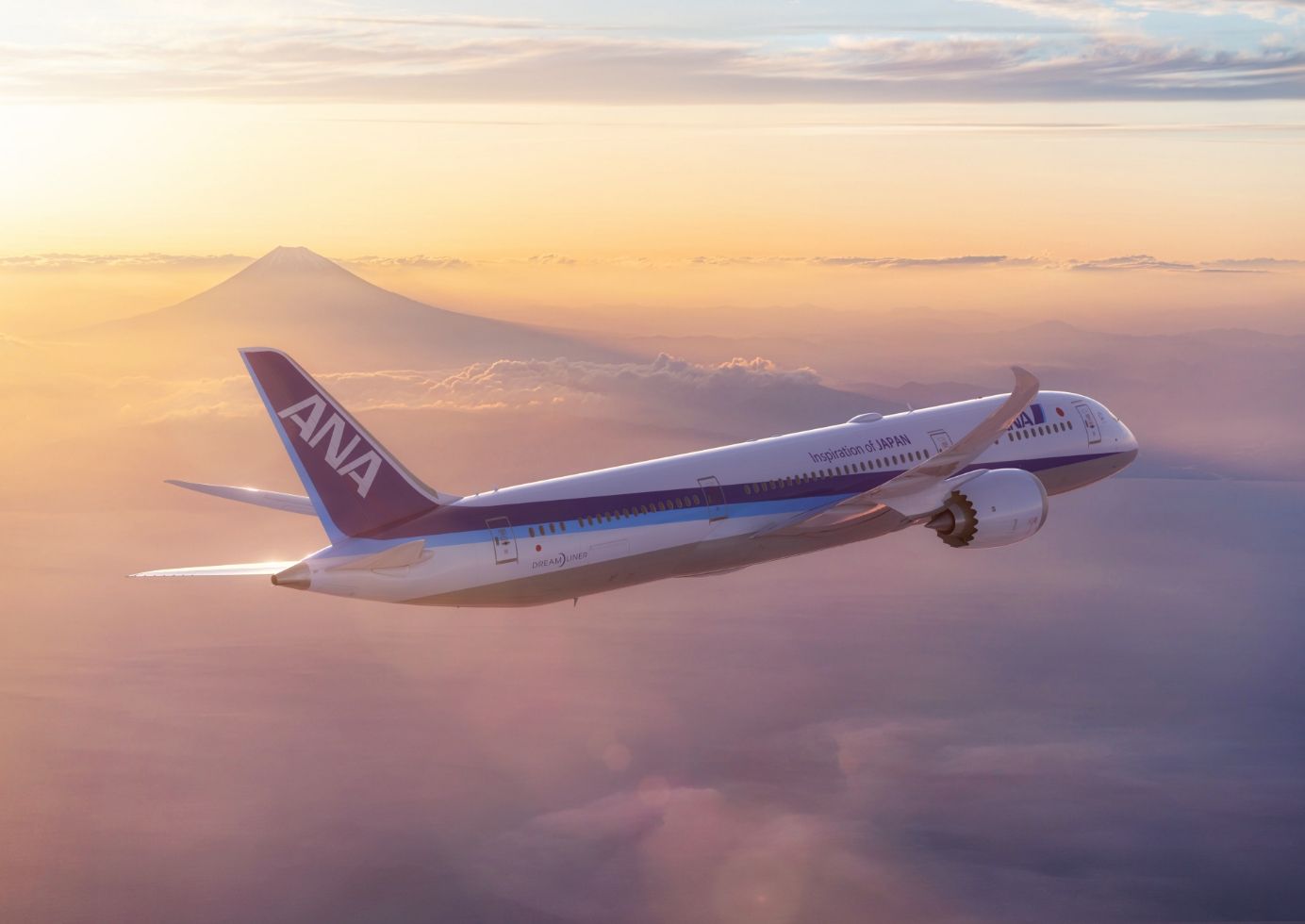
ANA
Travel becomes more exciting with ANA. We have an extensive network connecting Japan and the world — including service to over 50 airports nationwide. With warm Japanese hospitality, ANA offers convenient access across the country, making every journey more comfortable and turning your trip into a special memory.
-
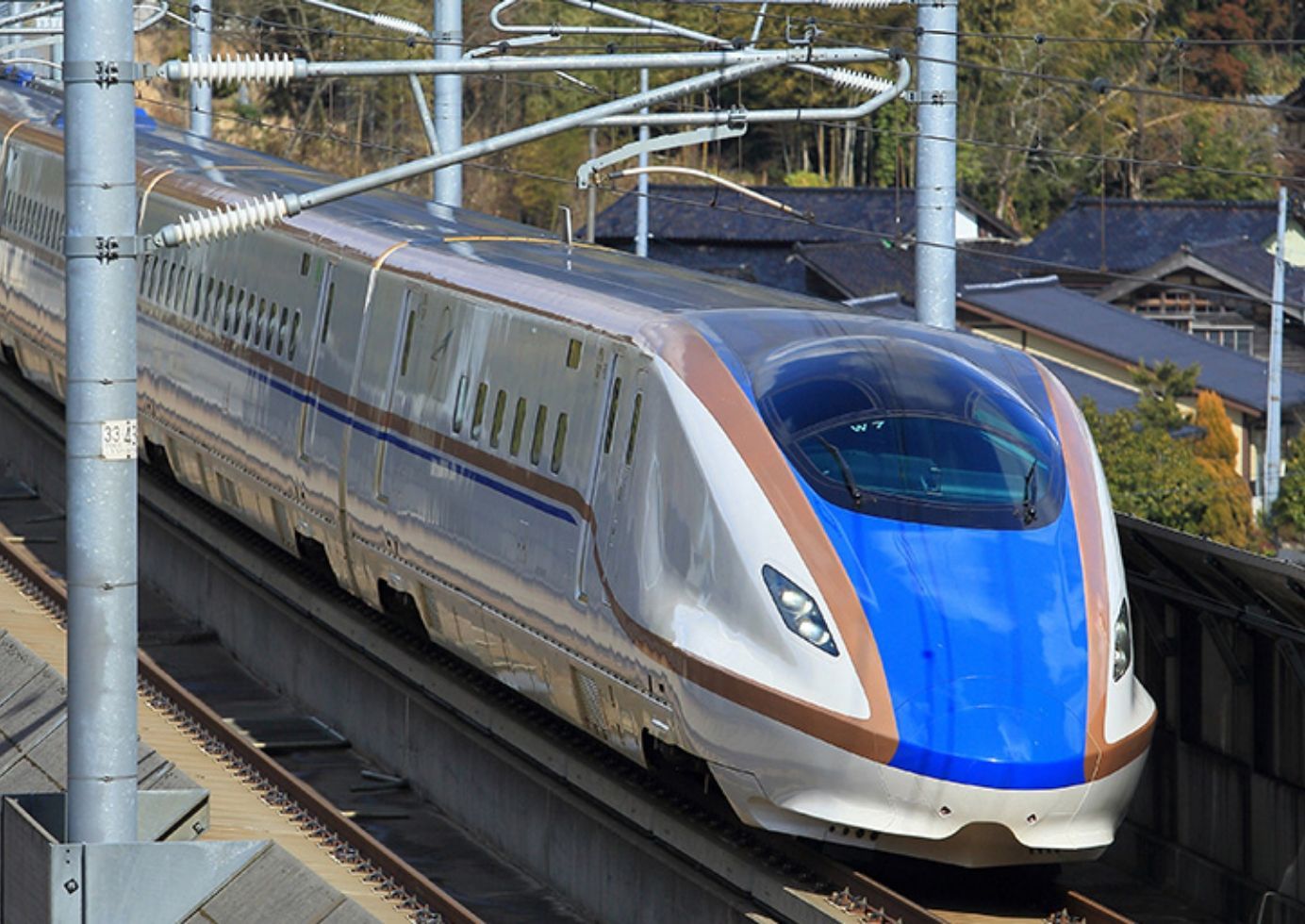
JR WEST
The Hokuriku Shinkansen connects Tokyo and the Hokuriku region directly and at high speed. With the convenient “Hokuriku Arch Pass,” you can travel from Tokyo through Hokuriku all the way to the Kansai area. The pass is available for purchase through online travel agencies. We hope you enjoy your journey on the Hokuriku Shinkansen.
